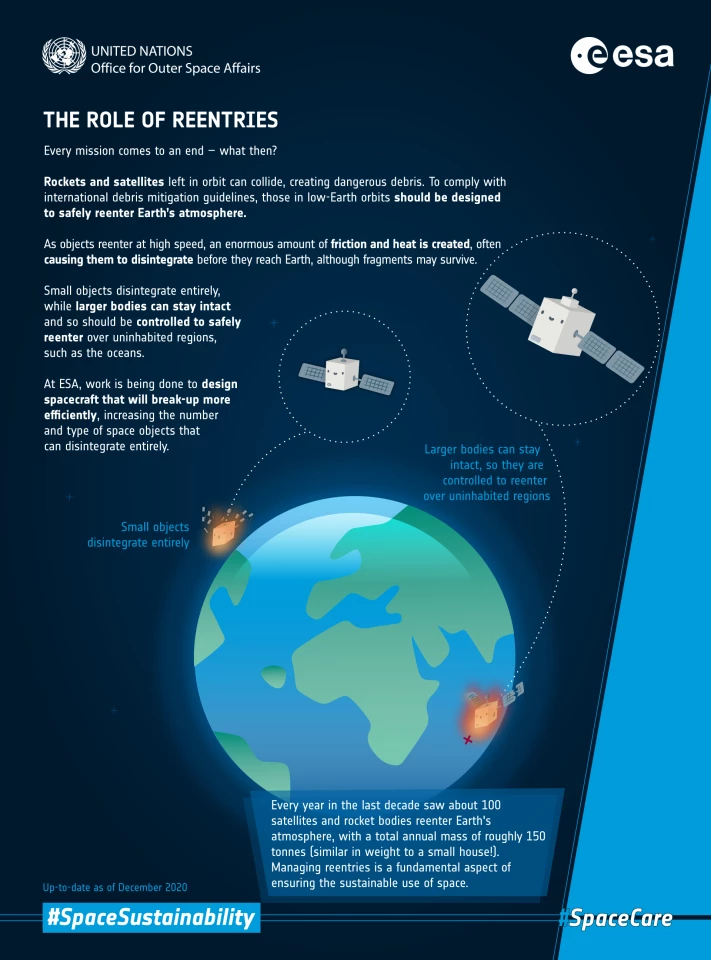As its Aeolus wind monitoring mission comes to an end, ESA is testing new procedures for deorbiting the decommissioned 1360-kg (3,000 lb) spacecraft to burn up in the Earth's atmosphere, advancing international space safety standards.
There are over 8,000 satellites orbiting the Earth, with many thousands more scheduled for launch in the next few years. Despite the incredible volume encompassed by a sphere denoting the distance between the Earth and the Moon, most spacecraft are crowded into a few bands of orbits near the Earth or at the geosynchronous distance.
In practical terms, this means that space is becoming dangerously overcrowded and the risk of collisions of satellites with inactive spacecraft and other space debris is increasing. To keep the problem from getting worse, engineers have been looking at a number of solutions, including finding ways to safely deorbit satellites at the end of their service life.
Launched in 2018, the Aeolus spacecraft was originally intended to carry out its mission to demonstrate how lasers can track winds on Earth for three years. However, the satellite is still in excellent shape and has exceeded its planned mission by 18 months. According to ESA, it could continue to function, but the propellants required to keep it on station have run out and its 320-km (200-mile) orbit is beginning to decay.

Aeolus formally ended its mission on April 30, 2023 and will strike the Earth's upper atmosphere and burn up, but the space agency wants to use the opportunity to test new, safer ways of controlling the reentry.
The particular problem is that the Earth's atmosphere isn't of a constant size. Solar flares and coronal mass ejections can cause it to temporarily expand, increasing the drag on orbiting satellites. This was the cause of the premature reentry of NASA's Skylab space station in 1979 when it burned up over the Indian Ocean and debris fell on Western Australia.
Over a period of months, ESA’s mission control center (ESOC) in Darmstadt, Germany will bring Aeolus down to 280 km (174 miles) and then to 150 km (93 miles). It will then descend into the atmosphere and burn up at about 80 km (50 miles) over an open ocean region.
Precisely when the reentry will occur depends on future solar activity, but it's unlikely to be beyond August.
"The exact details on the reentry approach and series of maneuvers and operations, as well as a more detailed timeline will be made public in mid-June," said ESA’s Aeolus Mission Manager, Tommaso Parrinello. "For now, we can anticipate that we are targeting the best ocean corridor to reenter."
Source: ESA






